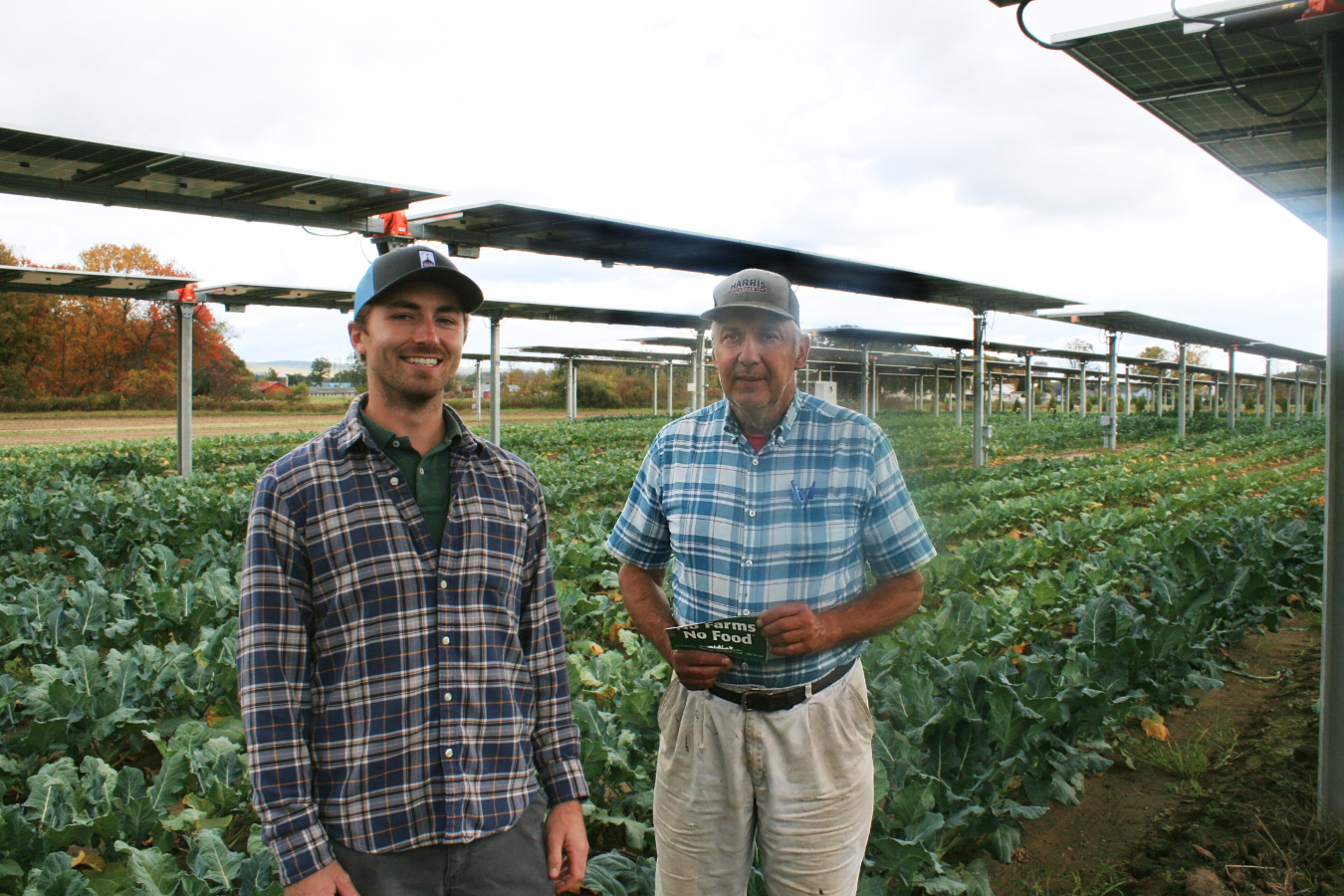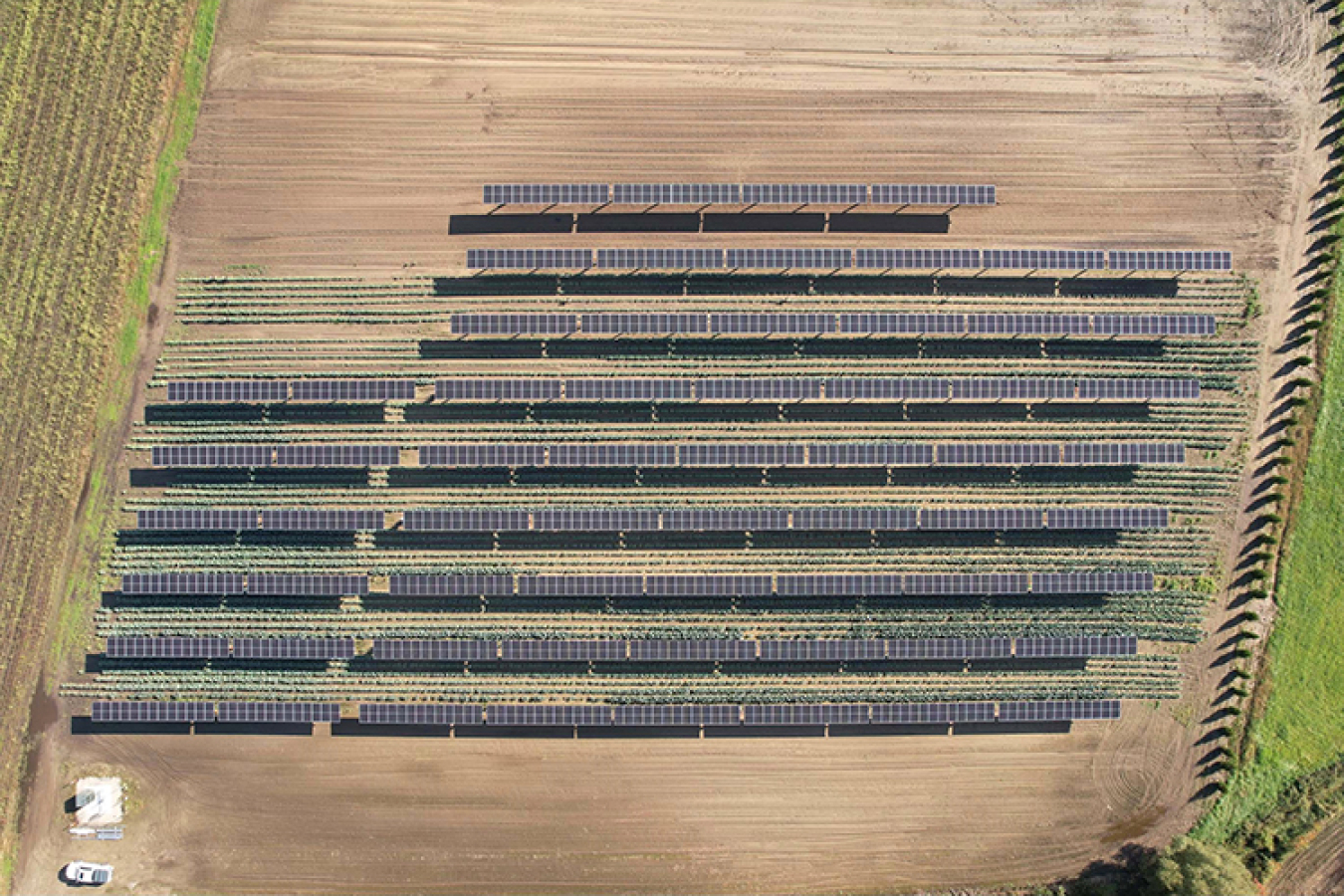On Farmworker Appreciation Day, we celebrate the growing collaboration between American agriculture and our renewable energy industries.
Office of Critical Minerals and Energy Innovation
August 6, 2024Farmworker Appreciation Day is a celebration of the men and women whose labor feeds America, sustains our global leadership in agricultural exports, and produces many of the fuels and materials that are driving our energy economy. At the Office of Energy Efficiency and Renewable Energy (EERE), we’re especially excited by the growing collaboration between American agriculture and our renewable energy industries. As the deployment of solar energy continues to accelerate, American farmers are finding new opportunities to share the benefits—and, in some cases, the land.

Renewable energy siting can be a complex process in which both public and private entities weigh the costs and benefits of new renewable energy deployments in a particular location. Developing renewable energy infrastructure that can share space with other forms of production can help resolve certain siting challenges. That is why agrivoltaics, or the co-location of solar energy infrastructure with productive farmland, is such a promising method of renewable energy deployment.
The National Renewable Energy Laboratory has identified 566 agrivoltaic projects in the United States as of August 2024. These facilities, which collectively generate more than 10 gigawatts of renewable energy, stand among crops, grazing pastures, or pollinator habitats. As more farmers discover the immediate and long-term benefits of co-location, agrivoltaic projects are becoming more common across the country.
Take Czajkowski Farm in Massachusetts’ Pioneer Valley, where a field of broccoli now grows underneath a 450-kilowatt solar array. Owner Joe Czajkowski is a third-generation farmer who saw an opportunity to improve the productivity of a few of his 400 acres—and reduce the farm’s electricity costs in the bargain. In July of 2023, Hyperion Systems LLC, a developer specializing in dual-use solar projects, completed the construction of 832 solar panels at Czajkowski Farm. The panels are ground-mounted at an elevation of 10 feet to allow adequate sunlight to reach the crop below.
“It helps your cash flow, it makes your farm more viable, and I think it’s better for the country and for the environment,” said Czajkowski. “I’m getting paid for the electricity and I also get a discount on my electric bill... it was a very good deal for us.”

In the long term, Czajkowski sees the solar array—and any additional agrivoltaic projects he might undertake—as an extra layer of financial security.
“I don’t get a pension. I have to save for it. If I do these three or four projects that we have in the pipeline, I’ll get a pretty good stream of passive income that will help me as I get older and will help me pass the farm on to the next generation.”
The solar industry has a lot to gain as well. The Solar Futures Study estimates that solar energy could require the use of 5.7 million acres of land by 2035. Although this acreage is only 0.3% of the continental U.S. land area, siting large-scale solar can cause local land-use conflicts, particularly with agricultural land. Agrivoltaic projects have the potential to resolve some of these conflicts, to the benefit of both farmers and the solar industry.
EERE’s Solar Energy Technologies Office (SETO) is working diligently to realize the full potential of agrivoltaics. Last month, SETO announced the upcoming American-Made Large Animal and Solar System Operations (LASSO) Prize, an $8.2 million prize competition. Participating farmers, ranchers, solar developers, landowners, product designers, extension agents, and researchers can form teams to conduct projects that will improve our understanding of cattle agrivoltaics. The prize is expected to open for submissions in September 2024.
The Foundational Agrivoltaic Research for Megawatt Scale (FARMS) funding program, also funded by SETO, examines how agrivoltaics can scale up to provide new economic opportunities to farmers, rural communities, and the solar industry. In December of 2022, the program selected six research projects that have since been working to overcome the barriers to wider deployment of large-scale solar agrivoltaic projects.
As the deployment of solar energy ramps up throughout the United States, we should seize every opportunity to optimize the use of the land that will sustain this booming industry. If we can perfect the relevant technologies and business practices, agrivoltaics could not only serve that purpose, but also unlock greater prosperity for both agriculture and the solar industry. Today, EERE extends its gratitude to American farmers for their partnership in this worthy effort.
News
The Weekly Jolt is a digest of the top energy innovation news, tips, events, and information from DOE and EERE.

